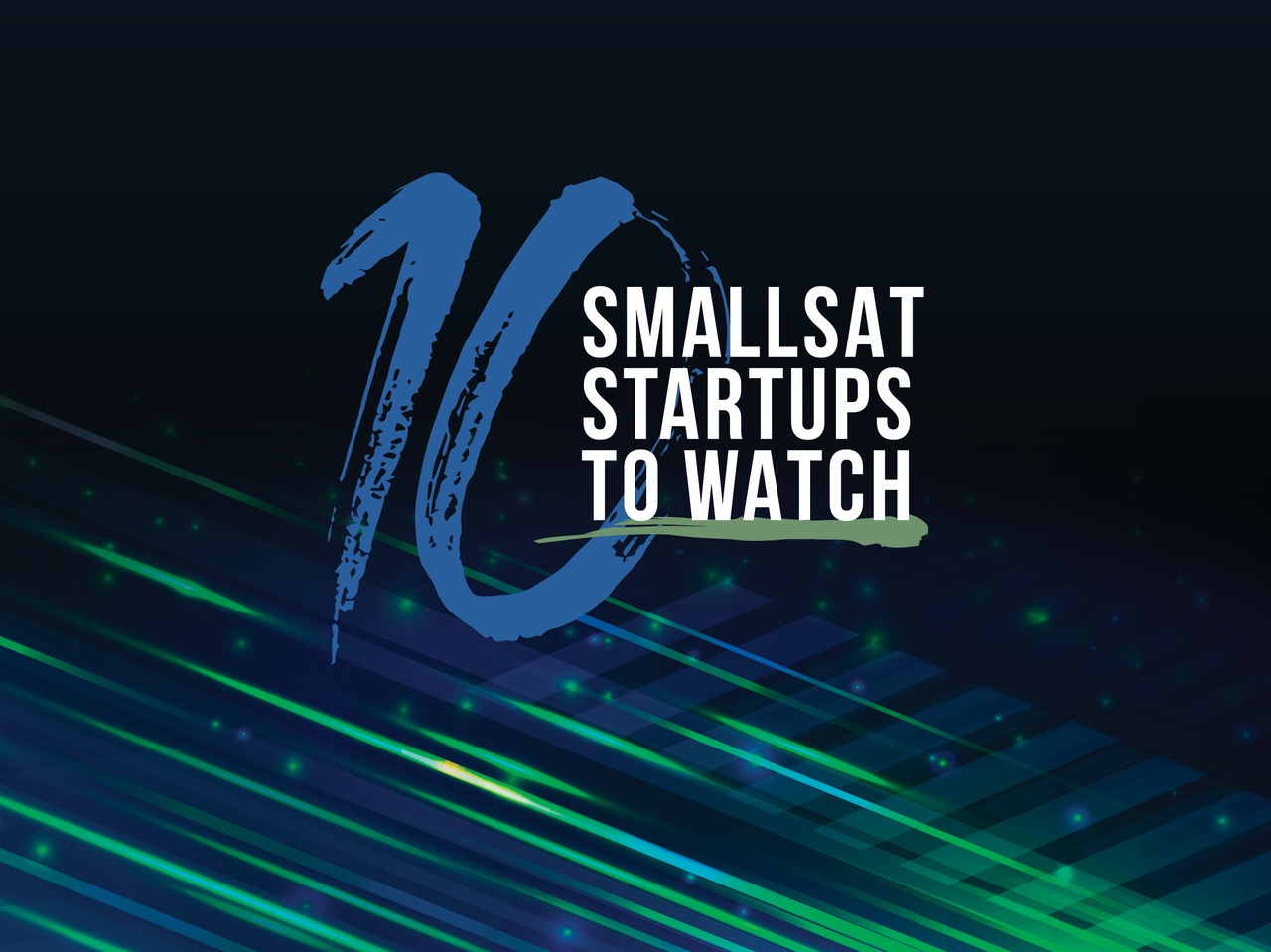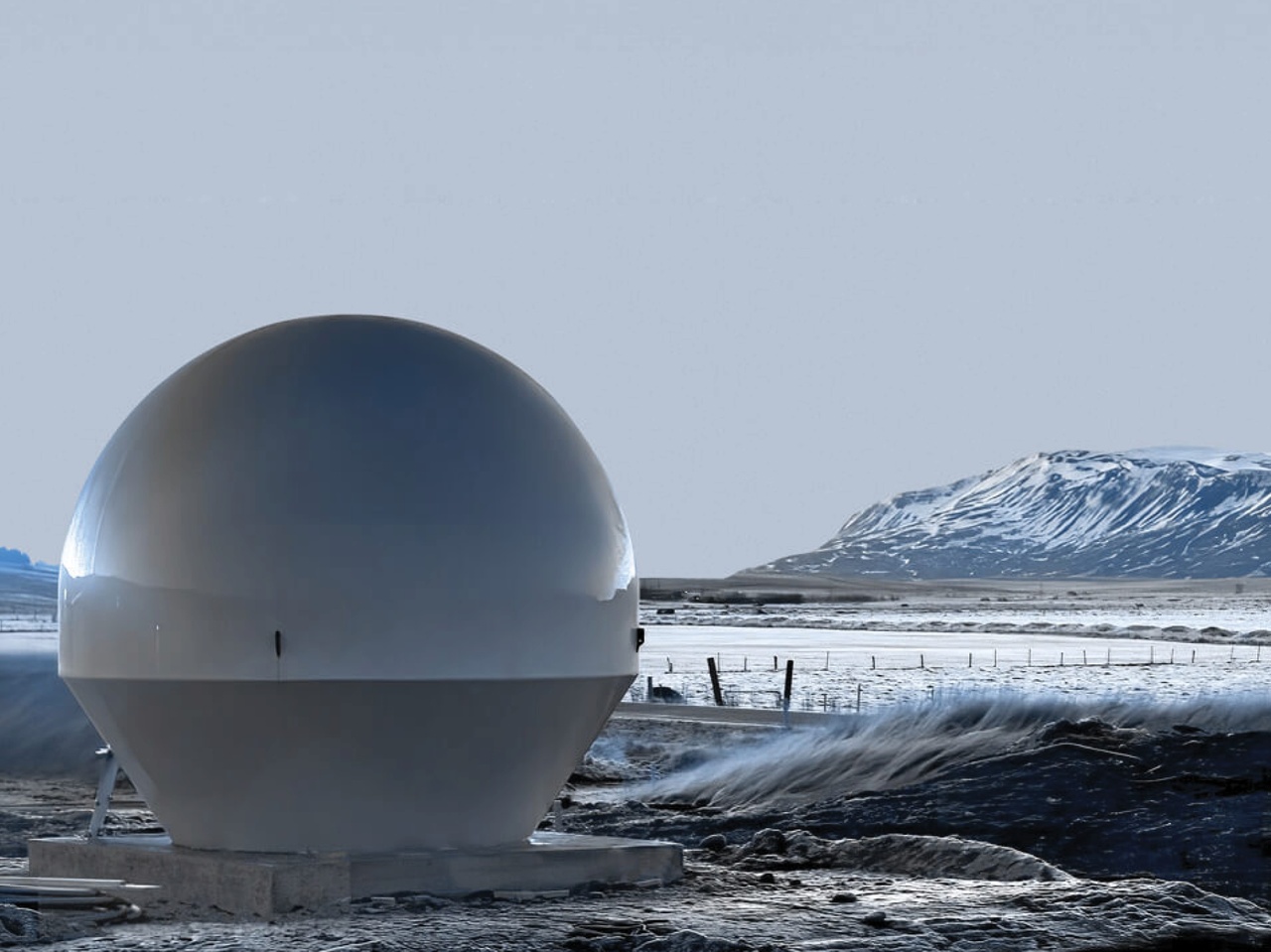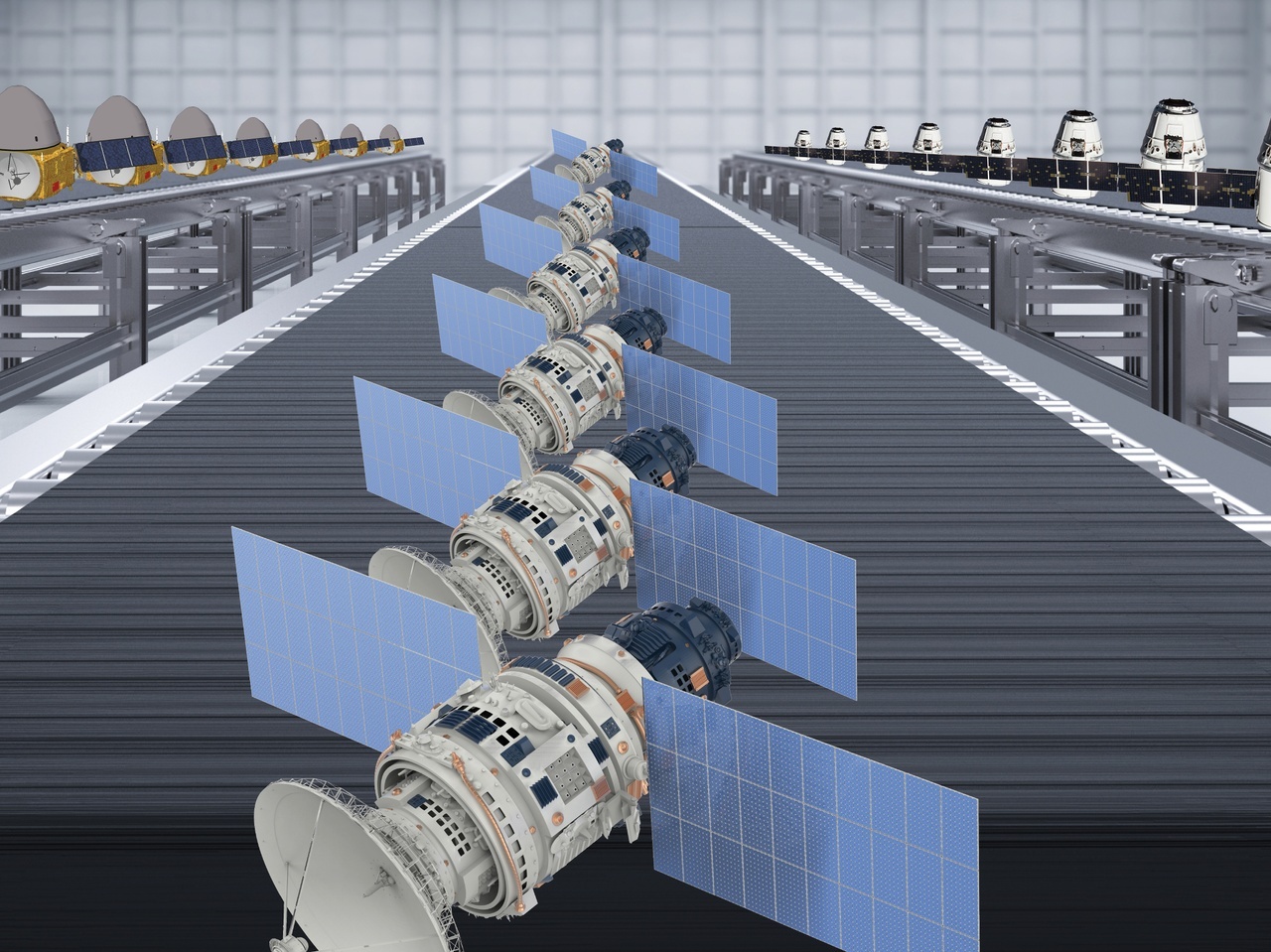
The Global Push for Space and Defense Capabilities Seeds Investment Growth for 2025
Investors are optimistic for ramp-ups in defense spending, but say trends will likely favor larger players as sure bets, with space consolidation likely to increaseJuly 28th, 2025In the face of tariffs and economic uncertainty, investors remain optimistic for the global space economy’s growth trajectory, with ramp-ups in defense spending and more nations making space capabilities a priority.
“Despite challenges in the financial markets and in the macro-economic situation, growth in the space economy continues at a super-exponential pace,” says Chad Anderson, founder and CEO of Space Capital, who recently marked his fund’s 10-year anniversary by ringing the bell at Nasdaq. “The number of satellites in orbit is growing at a pace faster than Moore’s Law, and that’s creating an unprecedented amount of data that we’re now unlocking and it’s continuing to power the world’s largest industries on Earth,” Anderson adds.
The U.S. space industry, which accounts for 52 percent of the private market equity investment, according to Space Capital’s Space IQ Q2 2025 report, continues to lead the world in the number of large funding deals this year.
Via Satellite asked a number of global space fund managers and analysts to provide their view of the current funding climate.
Return of the IPO
Mike Collett, founder and managing partner for Promus Ventures, which focuses on investing in early-stage deep tech startups, says “The fundraising climate for space companies for seed and Series A is still rather good. We continue to see high levels of space startup new rounds globally and expect this to continue.”
Investors report a return to larger evaluations for growth-stage deals – series B and C, though Collett says those deals will “require more traction and girth as has been the case over the last couple years.”
“There have been 10 $100 million-plus funding rounds in the U.S. since the start of the year. We’ve seen two IPOs this year in the U.S.,” says Filip Kocian, an investor for Expansion Aerospace Ventures, a seed-stage VC fund started last year in Paris. The fund currently has 137 million euros ($160 million) under management and 23 portfolio companies. “The situation is quite different in Europe — We’ve only seen 15 space venture rounds this year in Europe. There are some big rounds brewing, which will become public later this year.”
Ryan Puleo, a space investment analyst with BryceTech, points out that growth-stage deals show sustained volume and magnitude, with the amount invested in Series C deals in 2025 already exceeding the total for 2024. The analyst firm contends the number of American space firm public offerings is noteworthy, given that the only IPOs completed last year were for companies based in South Korea and Japan.
“This year has seen the return of the U.S. IPO,” Puleo says.
One of the biggest U.S. IPOs was Voyager Technologies, which debuted on the New York Stock Exchange in June, with a valuation of $3.8 billion. The Denver-based defense and space firm, which was recently added to the U.S. Air Force’s $46 billion agile acquisition contract, attracted double its asking share price, raising $382.8 million by selling nearly 12.4 million shares.
“There’s definitely some level of over-exuberance in the market. There are folks who are overly backing certain business models,” says Delian Asparouhov, who divides his time as a co-founder of Varda Space Industries and as a partner with Founders Fund, a VC fund formed in 2005, which today has $17 billion in assets under management.
Varda just added its name to the list of large Series C rounds this year — announcing a $187 million round in mid-July.
Asparouhov points to what he sees as an oversupply of bus and launch providers. “People are expecting there to be 10 new winners in a given category, when it’s really going to be three or four. You need to be big at this point,” says Asparouhov.
He predicts that 80 percent of VC dollars will go to SpaceX and the remaining 20 percent will be distributed across three or four consolidated players with valuations in the range of $500 million to $2 billion.
Betting on a few big winners is reflected in how investments have played out in Silicon Valley, says the investor and startup founder.
“We’re seeing a K-shaped distribution, where 85 percent of venture dollars deployed last year in Silicon Valley went into 15 logos, which is the highest concentration it’s ever been. You’ll see the equivalent in space, where the number of dollars go up, but the number of logos funded go significantly down,” Asparouhov says.
U.S. Space Priorities: Golden Dome Boost Amid Deep NASA Cuts
One funding trend in the U.S. is clear: National defense space spending is growing as civil space programs are being slashed. At press time, the U.S. FY 2026 budget is going through Congress, but the White House requested $40 billion for the Space Force. In contrast, the Administration’s proposed $18.8 billion budget for NASA pushes the space agency to its lowest level since 1961, when factoring inflation, and cuts nearly half of its science mission funding, or a third of NASA’s science portfolio. However, there are indications that Congress will reject some of the cuts.
“We’re headed toward a period of great uncertainty in the U.S. with regards to NASA’s budget,” says Carissa Christensen, founder and CEO of BryceTech. “At the same time, there are growing national security budgets in the U.S., in Europe, in the U.K., in Japan. Satellite and launch capabilities are critical for national security, so that is going to shape the business and investment environment.”
On the global space front, there’s been significant international investment activity focused primarily in China and Europe.
“Companies focused on national security customers and technologies are among those raising the most funding, over $500 million has been raised by these companies so far in 2025,” says BryceTech analyst Puleo.
Collett observes that U.S. space investments continue to be stronger than EU spending, although he notes that more European defense-oriented space startups are emerging.
Golden Dome, the Trump Administration’s proposed multi-layered missile defense system, represents a major opportunity for space startups, investors agree.
Collett points to estimates from the Congressional Budget Office that indicate the program could exceed $500 billion over the next 20 years. “We believe the cuts to Space Launch Systems and Orion, among others, won’t grossly change the continued support of space in the Trump administration,” he predicts.
Christensen says that while a surge of venture investment over the last decade has funded hundreds of startups, many of which have struggled to find customers. Golden Dome could potentially fill that void.
“We are seeing a shift toward national security customers partly because they have needs that commercial space capabilities map to and partly because they have the resources,” says Christensen. “Golden Dome falls exactly in that path — it’s a customer with money and that has resources, and which needs the capabilities that commercial space companies can provide, whether that’s launch, manufacturing, or space activities. So on both the demand and supply side, there’s going to be a lot of energy and interest around Golden Dome.”
Elon and Trump Effect: Europe Stepping Away from Starlink, Bolstering Space Defense
Anderson notes that Elon Musk’s involvement in the Trump Administration has prompted European space companies to turn away from Starlink services.
The Q2 2025 Space IQ report cites how geopolitical tensions are fueling more government and private spending Europe-wide. This includes NATO members pledging to raise defense budgets to 5 percent of GDP. The report further detailed how the European Commission’s new Competitiveness Fund “includes allocations for resilience, defense, and space – part of a broader push to reduce reliance on the U.S.”
As a result, the second quarter showed more early-stage funding rounds for European startups across satellites, launch, stations and logistics. The fundraising was led by Germany, which accounted for 71 percent of capital raised. The report also points to France taking the lead in a new capital raise for Eutelsat Group, which operates Europe’s competitor to Starlink, OneWeb. The U.K. government announced a move in mid-July to join the raise as well.
Asparouhov, who is Bulgarian, sees upside for Eastern European space firms like EnduroSat. The Bulgarian satellite manufacturer recently raised 43 million euros ($50.25 million) in investment led by Founders Fund. In fact, he predicts it will be the largest winner in the aerospace sector in Europe, driven by the “explosive demand for satellite components and avionics systems.”
“The company has 70-plus percent margins and is profitable, which is unheard for a space company,” he says, adding that the firm’s supply chain includes building satellites from more traditional automotive and medical device supply chains versus aerospace component providers that rely largely on aerospace supply chains, which are much lower volume and higher cost.
Anderson says while “there’s definitely a shift in perception that there’s going to be a larger opportunity in Europe,” it won’t happen overnight since 80 percent of the EU’s military hardware is still imported mostly from the U.S. “European nations will need time to build out entirely new supply chain capabilities, he explains.
More Industry Consolidation, Collaboration Expected
Many investment experts anticipate significant space industry consolidation over the next couple of years. Space Capital’s Q2 analysis points to SES’s acquisition of Intelsat “that will create a multi-orbit operator with enhanced Geostationary Orbit (GEO) and Medium-Earth Orbit (MEO) capabilities to challenge Starlink and Amazon’s Kuiper.”
Aparouhov cited Rocket Lab’s success growing its business through consolidation as a key market growth strategy that will continue. “You’ll see these kinds of mergers accelerate where sharks will eat up a bunch of minnows or minnows will merge.”
Expansion General Partner Charles Beigbeder says he’s already seeing tough competition occurring as Europe’s space markets open up for space tech entrepreneurs.
“Due to growing defense budgets, the big guys are coming back,” he says. “These smaller, middle-tier primes will both compete and collaborate.”
Changing procurement rules are incentivizing big companies to incorporate smaller firms into contracts. The smaller firms need the bigger players for their government go-to-market strategies.
“They’ve started to demonstrate they can deliver space hardware at scale, so the bigger players are more willing to play with the smaller companies,” adds Kocian.
Capability Gaps and Human Capital: Differentiators in 2025
A key strategy for Expansion, which specializes in supporting European startups from seed-stage, is to identify where there are capability gaps between U.S. and existing European ventures and to invest in those solutions through partners in the research community.
“There are a few technologies missing in Europe – one is Positioning Navigation and Timing, or PNT,” Kocian says, noting that globally, there is a growing recognition of the need for PNT solutions in Low-Earth Orbit (LEO) to enhance resilience and security of critical infrastructure.
“While the U.S. has made a clear policy that they will support a commercial LEO PNT solution, Europe currently has taken a more traditional consortia approach,” says Kocian.
Europe is funding two LEO-PNT in-orbit demonstrators – one led by GMV Aerospace and Defence S.A.U., the other by Thales Alenia Space France S.A.S. The two consortia involve over 50 entities from 14 countries, including industrial actors with a long heritage in space, together with new actors following novel approaches to space.
“Although those are only demonstration missions, I'd argue that…positioning as an early anchor customer of commercial solutions would be a better approach,” he says.
While missile defense and technologies like LEO-PNT are important, Anderson remains bullish on satellite infrastructure. The Space Capital chief executive says that SpaceX making launch affordable removed barriers to entry for space startups and enabled the launch of affordable payloads with new capabilities. But in his view, the industry went too far down the low-cost cubesat route.
“Now, we’ve swung back into a place where people are building really interesting satellites with really interesting sensors that are providing extremely valuable data for these markets,” he says.
Anderson sees one of the biggest areas of opportunity for investors is in geospatial Artificial Intelligence (AI).
“We’ve got much more capable, interesting infrastructure being launched, which is enabling all types of new applications and solutions for end markets, driven by the huge archive of data that goes back decades from Earth observation satellites,” he says.
As investors look to the next year and which companies will come out on top, they all agree that funding is tight and cool technology isn’t enough. The paramount consideration for whether companies get funded comes down to one factor: the people leading the business and communicating their technology’s use case to investors.
“Ultimately, the make-or-break often comes down to the strength and execution capability of the team,” says Anderson. VS
Anne Wainscott-Sargent is a writer and content strategist covering the impact of innovations driving the space economy, and the influencers shaping the larger worlds of science, technology and research







